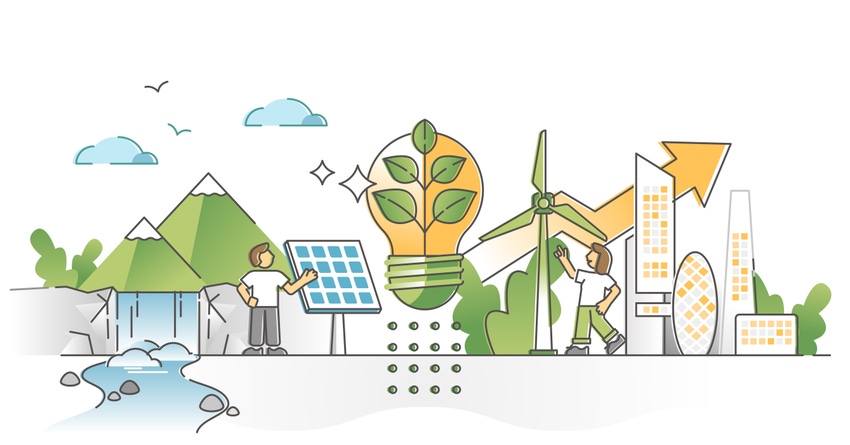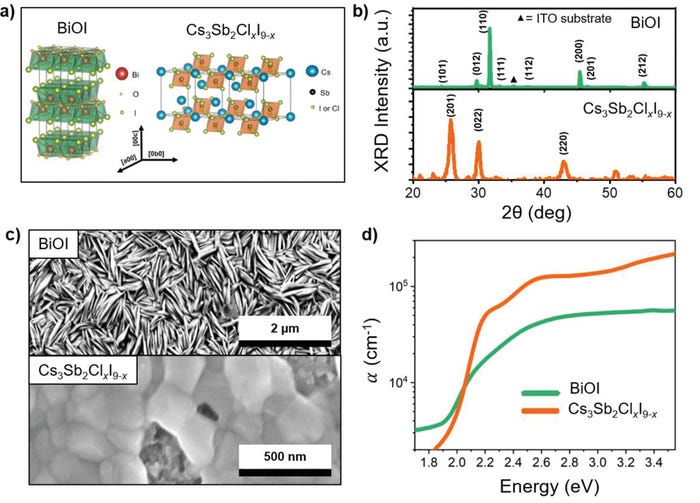Smart Wireless Devices Turn to Green Materials for Energy
Perovskite-inspired materials can use indoor lighting to provide electricity, paving the way for use in wearable devices and smart-home technology.
May 4, 2021

While solar is a renewable source of energy—and therefore a greener source of energy than fossil fuels—many of the materials used to create the devices that harvest electricity from the sun aren’t very environmentally friendly.
Researchers at Soochow University in China—working with scientists at Imperial College of London, and the University of Cambridge—are aiming to change all that with new, lead-free materials that have a key advantage—they can harvest enough energy from indoor light to power wireless smart devices.

Image Credit: Peng et al., https://doi.org/10.1002/aenm.202002761. © 2020 The Authors. Advanced Energy Materials published by Wiley‐VCH GmbH. Licensed under a Creative Commons Attribution License (CC BY 4.0), https://creativecommons.org/licenses/by/4.0/.
The team found inspiration in a new type of materials being explored for use photovoltaic devices—perovskites—to develop easy-to-fabricate materials that hold promise for a broader range of use.Using solar energy can ease reliance on fossil fuels, but currently, this type of power is restricted mainly to harvesting energy outdoors when the sun is shining. Though there are technologies available to harvest ambient light and solar energy even on cloudy days, they aren’t as widespread or compatible for manufacture with wireless and mobile devices.
A key problem with perovskites, however, is that while they are cheaper to make than traditional silicon-based solar panels, they contain toxic lead substances. To solve this issue in their work, researchers focused on what are called “perovskite-inspired materials,” which are based on more environmentally friendly elements such as bismuth and antimony instead of lead.
Maximizing Efficiency
Perovskite-inspired materials may be less impactful on the environment than perovskites themselves, but they aren’t as efficient at absorbing sunlight. One advantage to the materials that the team discovered, however, is that they are much better at absorbing indoor light.
This paves the way to use these materials in photovoltaic devices that can power small electronic devices that people use in their homes, such as sensors or wearable technology.
“By efficiently absorbing the light coming from lamps commonly found in homes and buildings, the materials can turn light into electricity with an efficiency already in the range of commercial technologies,” Robert Hoye, a professor in the Department of Materials at Imperial College said in a press statement.
Indeed, the team demonstrated how they can use the materials to harvest light from indoor illumination to power electronic circuits, opening up “a whole new direction in the search for green, easy-to-make materials to sustainably power our smart devices,” Vincenzo Pecunia, one of the researchers on the project from Soochow University, said in a press statement.
Researchers published a paper on their work in the journal Advanced Energy Materials.
The team plans to continue its work to improve the performance of the materials so they can not only be on par with but eventually surpass the performance of technologies currently used to harvest ambient light for electricity, Hoye said.
Elizabeth Montalbano is a freelance writer who has written about technology and culture for more than 20 years. She has lived and worked as a professional journalist in Phoenix, San Francisco, and New York City. In her free time, she enjoys surfing, traveling, music, yoga, and cooking. She currently resides in a village on the southwest coast of Portugal.
About the Author(s)
You May Also Like
.jpg?width=300&auto=webp&quality=80&disable=upscale)


